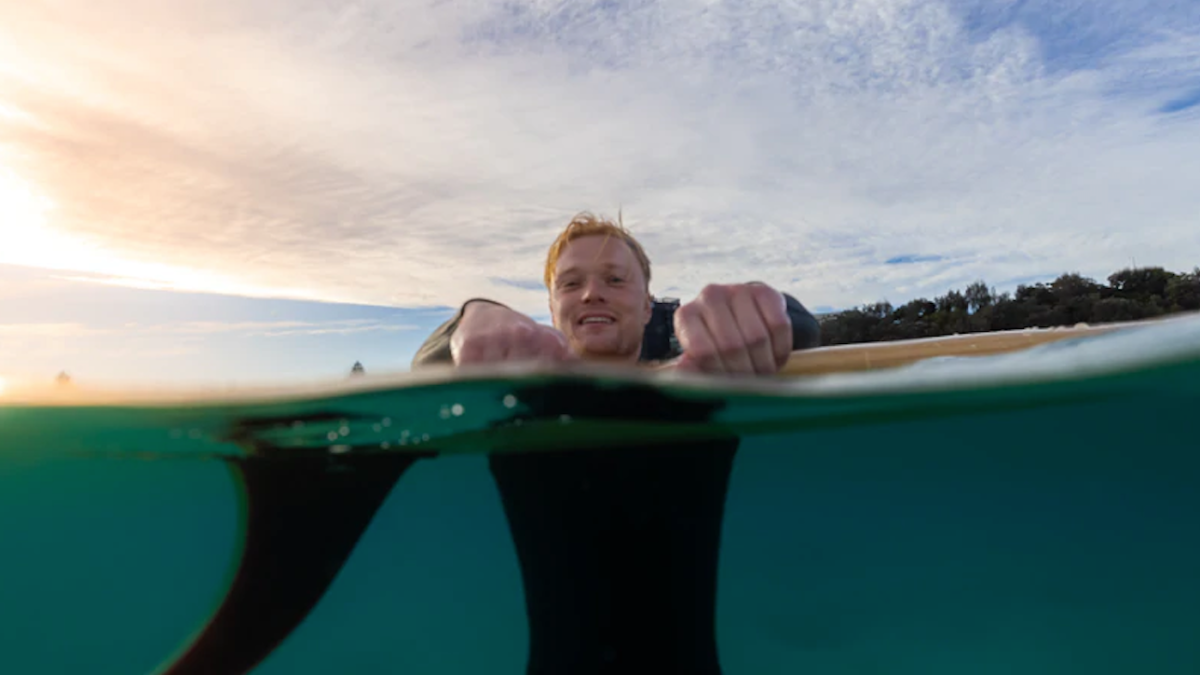
Surfing can conjure up many images. The pristine blue ocean, feelings of peace and serenity as you paddle out the back, and the high of catching the perfect wave. You’d think such an activity wouldn’t impact the environment at all. I mean, all you’re doing is floating in the ocean on a board, not throwing trash directly into the mouths of turtles.
It turns out that the process to make your much-loved surfboard can actually be pretty toxic. Most surfboards are made with highly toxic polyurethane foam and fibreglass before being coated in acrid polyester resin blended with acetone. Gross.
Of course, like everything else in our modern, disposable world, it wasn’t always this way. Surfers used to ride waves on chunks of wood. While these break down at the end of their life cycle, they’re pretty heavy to chuck on the top of your Kombi van.
So what’s a surfer to do?
Emile Theau, a Chemical Engineering and Nanotechnology graduate from The University of Sydney, got into surfing when the pandemic started and discovered pretty quickly just how damaging the sport can actually be.
“I bought a new board and it snapped in two. I became interested in how they were made and why they were so disposable. I then became intrigued by wooden surfboards,” Emile says.
“Although beautiful, these boards took a lot of labour and I wanted to use engineering knowledge to reduce the labour time and make the board available and affordable for more surfers.”
A man of the people.
View this post on Instagram
Alongside his co-founder, Alastair Pilley, the duo created Sine Surf. Made from lightweight timber from Paulownia trees, the surfboards use isolated air chambers. This makes it almost impossible to flood which then cuts out the need for all of that toxic foam and plastic.
The only non-biodegradable parts of the whole board are the fin boxes and bio-resin. They even take timber transportation and electricity into account. By producing 91% less plastic waste compared to regular surfboard production, it’s a truly sustainable mission from start to surf.
“It’s a stretch to call them the ‘most sustainable’ because you can always surf on a plank of wood with no coating! We’re probably the most sustainable you can buy that still has good function.”
The pair’s drive to make a positive impact on the planet was helped when they entered (and won) HP Australia’s Generation Impact. The program, created in partnership with Ocean Impact Organisation, helps Australians who are trying to solve issues around climate change’s impact on the ocean. Sine Surf won $40,000 (!!), HP laptops and a tailored mentorship with HP and the Ocean Impact Organisation to help grow the business. Huge.
“HP has given us some great expertise and connections,” says Emile. “The money has allowed us to buy much needed equipment and without it we’d be in the red.”
Being a young start up isn’t always easy but doesn’t it warm ya heart to hear of programs like HP Australia’s Generation Impact? A corporation actually wanting to help make the world a better place through the power of technology? We love to see it.
So, what would Emile say to others who stumble upon a world-changing idea?
“Just because something isn’t done by other people doesn’t make it impossible. Look at the fundamental principles and open your mind to the possibilities.”



